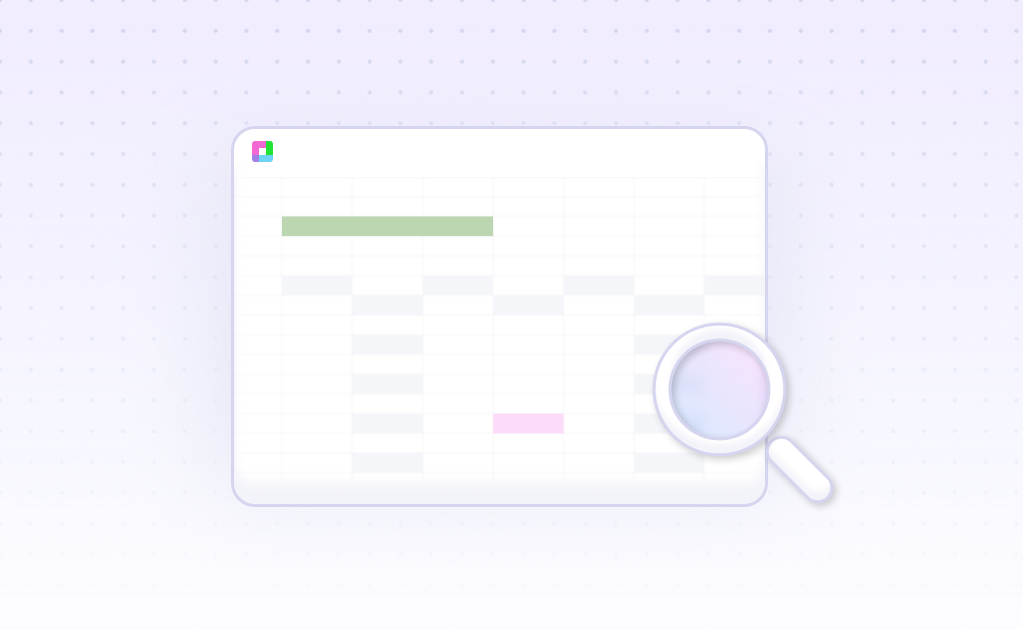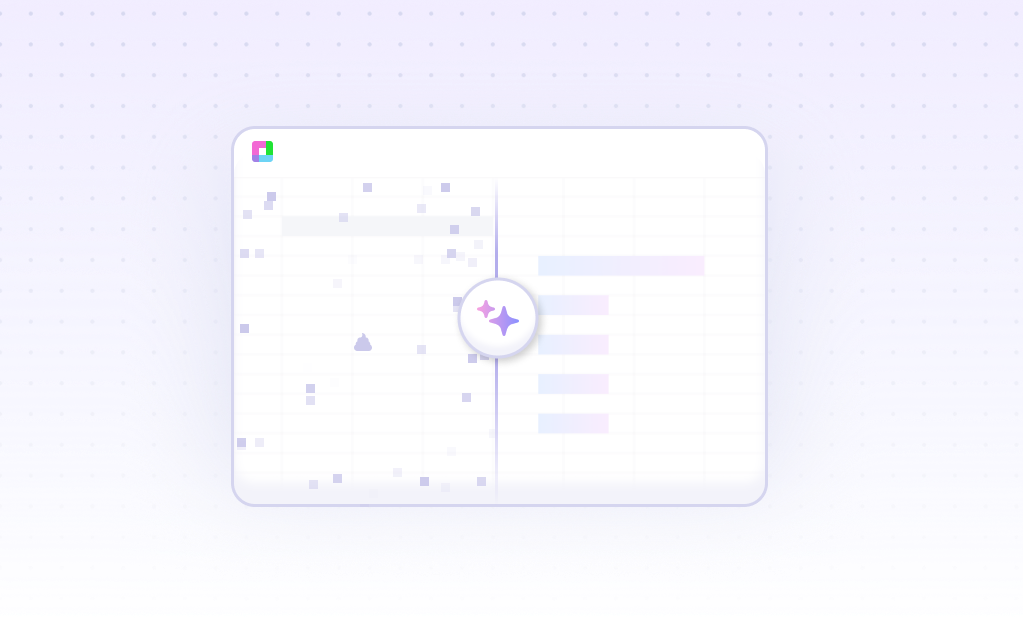
The cryptocurrency market never sleeps, and neither should your analysis. With billions traded daily across hundreds of digital assets, successful crypto trading demands more than gut instinct—it requires systematic analysis of complex patterns, correlations, and market dynamics.
Traditional spreadsheet tools weren't built for the unique challenges of cryptocurrency analysis. From handling 24/7 market data to calculating complex technical indicators across multiple exchanges, finance professionals need specialized analytical capabilities that can keep pace with digital asset volatility.
Why AI-Powered Crypto Analysis Matters
Traditional analysis methods fall short in cryptocurrency markets. Here's how advanced analytics transforms your trading approach:
Real-Time Market Intelligence
Process live price feeds, volume data, and market sentiment across multiple exchanges simultaneously. No more manual data collection or delayed insights.
Advanced Pattern Recognition
Identify complex trading patterns, support/resistance levels, and trend reversals using AI-powered technical analysis that adapts to market conditions.
Risk Management Automation
Calculate position sizes, stop-loss levels, and portfolio allocations automatically based on volatility metrics and risk tolerance parameters.
Cross-Exchange Analysis
Compare prices, identify arbitrage opportunities, and track liquidity across multiple cryptocurrency exchanges from a single dashboard.
Portfolio Performance Tracking
Monitor returns, calculate Sharpe ratios, and analyze correlation matrices for diversified cryptocurrency portfolios with automated reporting.
Predictive Market Modeling
Build sophisticated forecasting models using machine learning algorithms trained on historical price data, social sentiment, and on-chain metrics.
Real-World Cryptocurrency Analysis Examples
See how professional traders and investment firms use advanced analytics to navigate cryptocurrency markets:
Multi-Timeframe Technical Analysis
A quantitative trading firm analyzes Bitcoin price action across 15-minute, hourly, and daily timeframes simultaneously. By combining moving averages, RSI, and MACD indicators with volume-weighted average price (VWAP) calculations, they identify optimal entry and exit points with 68% accuracy improvement over manual analysis.
DeFi Yield Farming Optimization
A digital asset manager tracks yields across 50+ decentralized finance protocols in real-time. Their analysis incorporates impermanent loss calculations, gas fee optimization, and liquidity pool dynamics to maximize returns while minimizing smart contract risks, achieving 23% higher yields than benchmark strategies.
Correlation-Based Portfolio Rebalancing
An institutional crypto fund uses rolling correlation analysis to optimize their 25-asset portfolio. By monitoring how different cryptocurrencies move relative to each other and traditional markets, they reduce portfolio volatility by 31% while maintaining upside exposure to emerging altcoins.
Market Sentiment Integration
A proprietary trading desk combines on-chain metrics (network activity, whale movements, exchange flows) with social sentiment data from multiple sources. This multi-factor model helps them anticipate market moves 2-4 hours before price action, particularly during high-volatility events.
Arbitrage Opportunity Detection
A crypto arbitrage fund monitors price differences across 12 major exchanges for 200+ trading pairs. Their automated analysis identifies profitable opportunities within milliseconds, accounting for trading fees, withdrawal limits, and execution time to generate consistent risk-free returns.
Options Strategy Backtesting
A derivatives trader backtests complex options strategies on Bitcoin and Ethereum using 3 years of historical volatility data. By simulating thousands of scenarios with varying market conditions, they optimize strike prices and expiration dates to maximize risk-adjusted returns.
Your Crypto Analysis Workflow
From raw market data to actionable trading insights in four simple steps:
Connect Your Data Sources
Integrate with major cryptocurrency exchanges, data providers, and blockchain APIs. Import historical price data, order books, and on-chain metrics with one-click connections. Support for REST APIs, WebSocket feeds, and CSV imports ensures comprehensive data coverage.
Apply Advanced Analytics
Use pre-built templates for technical indicators, risk metrics, and performance calculations. Create custom formulas for complex strategies like pairs trading, momentum scoring, and volatility forecasting. AI assists with pattern recognition and anomaly detection.
Visualize Market Insights
Generate professional charts, heatmaps, and dashboards that update in real-time. Overlay multiple indicators, create correlation matrices, and build custom visualizations that highlight key market dynamics and trading opportunities.
Execute Data-Driven Decisions
Export analysis results to trading platforms, generate automated alerts for key market events, and create detailed reports for stakeholders. Set up monitoring workflows that track performance and adjust strategies based on market conditions.
Advanced Cryptocurrency Analysis Capabilities
Professional cryptocurrency trading requires sophisticated analytical tools that can handle the unique characteristics of digital asset markets. Our platform provides enterprise-grade capabilities specifically designed for crypto analysis:
Market Data Processing
Technical Analysis Tools
Risk Management & Portfolio Analytics
Proven Cryptocurrency Trading Strategies
Transform theoretical knowledge into profitable trading systems with these battle-tested cryptocurrency strategies, each optimized through rigorous backtesting and real-world performance validation:
Momentum-Based Strategies
Breakout Trading: Identify key resistance and support levels using volume-weighted price analysis. When Bitcoin breaks above a 20-day high with volume 150% above average, the strategy triggers long positions with stop-losses at the breakout level. Historical backtesting shows 64% win rate with average returns of 12% per trade.
Trend Following: Combine multiple moving average crossovers with momentum oscillators. The system enters positions when 50-day EMA crosses above 200-day EMA while RSI moves above 50 and MACD shows positive divergence. Risk management includes trailing stops that adjust based on Average True Range (ATR) calculations.
Mean Reversion Approaches
Bollinger Band Reversals: Trade oversold/overbought conditions when prices touch Bollinger Band extremes with RSI confirmation. Entry signals occur when price touches lower band with RSI below 30, targeting the middle band with stops below recent swing lows. This strategy works particularly well during sideways market conditions.
Pairs Trading: Exploit price relationships between correlated cryptocurrencies. Monitor the spread between Ethereum and Litecoin, entering trades when the ratio deviates more than 2 standard deviations from the 30-day mean. Position sizes are adjusted based on the correlation coefficient and volatility ratio.
Volatility-Based Systems
Volatility Breakout: Use Average True Range to identify low-volatility periods followed by expansion. When 10-day ATR drops below the 50-day average by 30%, prepare for breakout trades in the direction of the first significant price move. This approach capitalizes on volatility clustering in cryptocurrency markets.
Options Strategies: Implement volatility trading using Bitcoin and Ethereum options. Sell straddles when implied volatility exceeds historical volatility by 25%, while buying strangles during low IV periods before major events. Delta hedging maintains market neutrality while capturing volatility risk premium.
Cryptocurrency Analysis FAQ
How accurate are cryptocurrency price predictions using technical analysis?
Technical analysis accuracy in crypto markets varies significantly based on timeframe, market conditions, and methodology. Short-term predictions (1-4 hours) using multiple confirming indicators can achieve 55-65% accuracy during trending markets, while longer-term forecasts become less reliable due to crypto's inherent volatility. Combining technical analysis with fundamental factors like adoption metrics, regulatory news, and on-chain data typically improves prediction accuracy by 10-15%.
What's the difference between analyzing cryptocurrencies versus traditional assets?
Cryptocurrency analysis requires unique considerations: 24/7 trading creates continuous price action without market close gaps; extreme volatility (often 5-10x higher than stocks) demands adjusted risk parameters; correlation with traditional markets varies during different market cycles; on-chain metrics provide additional fundamental data not available for traditional assets; and liquidity can vary dramatically between major and minor cryptocurrencies, affecting technical indicator reliability.
How do I handle the extreme volatility in cryptocurrency analysis?
Managing crypto volatility requires specialized approaches: use logarithmic price scales for long-term charts; adjust technical indicator periods (shorter EMAs, wider Bollinger Bands); implement volatility-based position sizing using ATR or VIX-style metrics; employ multiple timeframe analysis to filter noise; set wider stop-losses based on currency-specific volatility patterns; and consider volatility clustering—high volatility periods are often followed by more high volatility.
Which technical indicators work best for cryptocurrency trading?
Effective crypto indicators include: Volume-Weighted Average Price (VWAP) for intraday trading; Relative Strength Index (RSI) with 14-period settings; Moving Average Convergence Divergence (MACD) for trend confirmation; Bollinger Bands for volatility and mean reversion; On-Balance Volume (OBV) for volume analysis; and custom indicators like the Fear & Greed Index. The key is combining multiple indicators rather than relying on any single signal.
How important is volume analysis in cryptocurrency trading?
Volume analysis is crucial in crypto markets due to varying liquidity across exchanges and trading pairs. Key volume metrics include: volume-price trend analysis to confirm breakouts; volume rate of change to identify accumulation/distribution; volume-weighted indicators like VWAP for better entry/exit points; analyzing volume spikes during news events; and monitoring exchange-specific volume patterns since different exchanges can show varying volume characteristics for the same asset.
Can I use the same risk management rules for crypto as traditional trading?
Traditional risk management principles apply but require significant adjustments for crypto: position sizes should typically be 2-5x smaller due to higher volatility; stop-losses need wider margins (often 15-25% vs 5-8% for stocks); correlation analysis must account for crypto's tendency to move together during market stress; and portfolio allocation to crypto should rarely exceed 5-20% of total investment capital depending on risk tolerance and investment goals.
Frequently Asked Questions
If your question is not covered here, you can contact our team.
Contact Us




